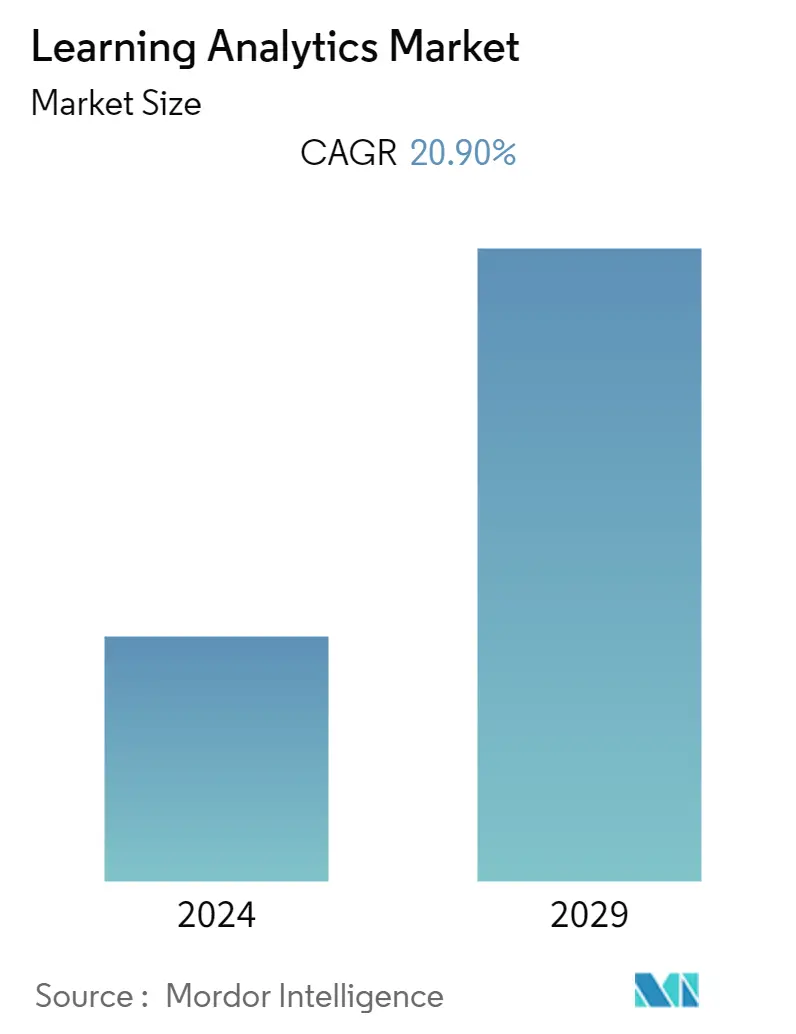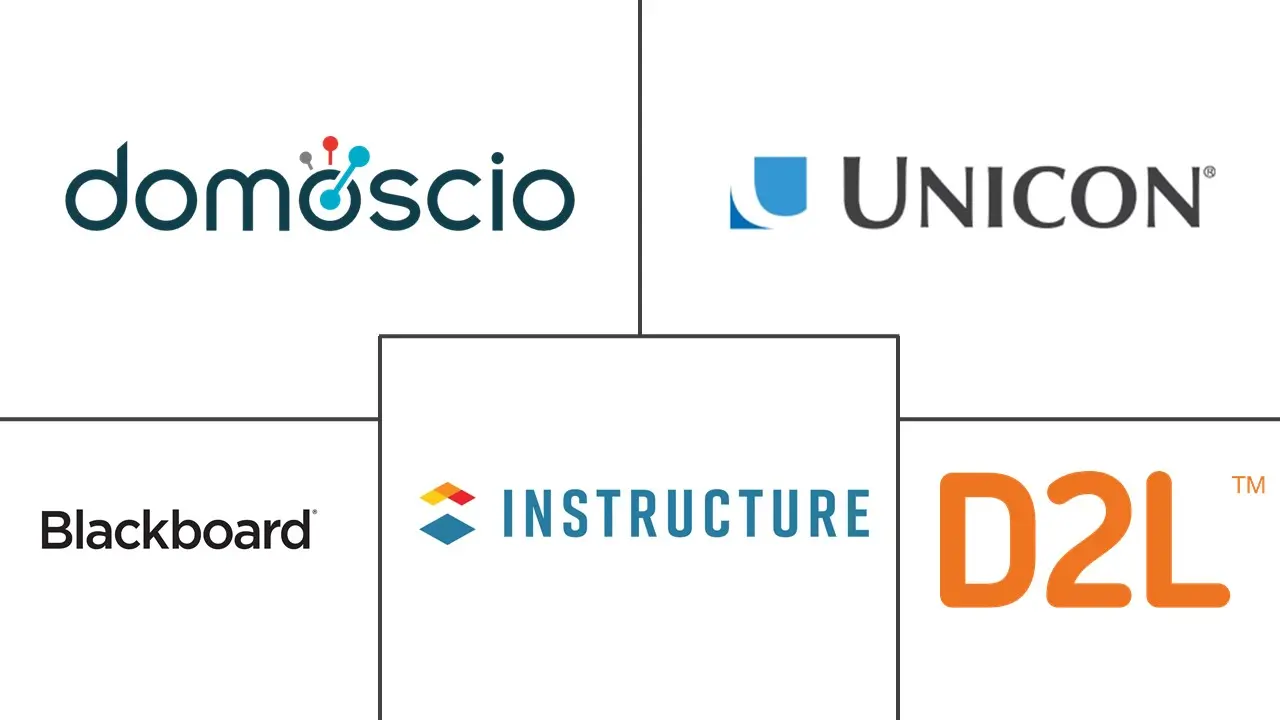Market Size of Learning Analytics Industry

| Study Period | 2019 - 2029 |
| Base Year For Estimation | 2023 |
| CAGR | 20.90 % |
| Fastest Growing Market | Asia Pacific |
| Largest Market | North America |
| Market Concentration | Medium |
Major Players
*Disclaimer: Major Players sorted in no particular order |
Need a report that reflects how COVID-19 has impacted this market and its growth?
Learning Analytics Market Analysis
The learning analytics market is expected to witness a growth at a CAGR of 20.9% over the forecast period (2021-2026). Learning analytics (LA) market is rapidly growing in educational institutions worldwide, especially for higher educations and MOOCs providers, driven primarily by the need to improve the student success rate, course material efficiency, retention, and the learning experience. Learning analytics follows the digital footprints of learners, transforming the way they look at learning processes, and enabling data-driven decisions to maximize student success. It has continued to evolve as technology remains one of the main drivers of educational change.
- The learner and the faculty can use learning analytics for a specific purpose, such as identifying success and failure patterns and course progress, which can assist in developing a creative curriculum and, thus, assist the institutions and course providers in improving student retention. For instance, the learning analytics stakeholders comprise software providers, platform providers, institutions, faculty, students, and the government.
- Learning analytics demand has increased due to the vast data set of varied information (big data). The growing data needs to be clustered (for similar traits) to offer a real-time insight for a decision support system based on data using mathematics, statistics, predictive modeling, and other streams.
- An increase in the massive open online courses (MOOC) content and a large number of higher education institutions making their courses available through the internet to a global student base has acted as a catalyst for the learning analytics adoption. It helps them get eased yet detailed information about an individual's progress in a course and supports faculty to change, improve, or present the course's concepts and contents better.
- Learning analytics is a part of the umbrella system. Learning management systems (LMS) help in offered course analysis, student retention, modeling the patterns of success and failures, and improving the learner's efficiency. It does so without adding to the cost, as learning analytics uses the existing resources for generating data used for various analytical approaches. This has augmented the demand for learning analytics. It serves as the base and platform for the next level of analytics implementation, generally termed as academic analytics.
- Moreover, the COVID-19 crisis has resulted in schools being shut all across the world. Globally, over 1.2 billion children are out of the classroom. As a result, education has changed dramatically, with the notable rise of e-learning, whereby teaching is undertaken remotely and on digital platforms.
